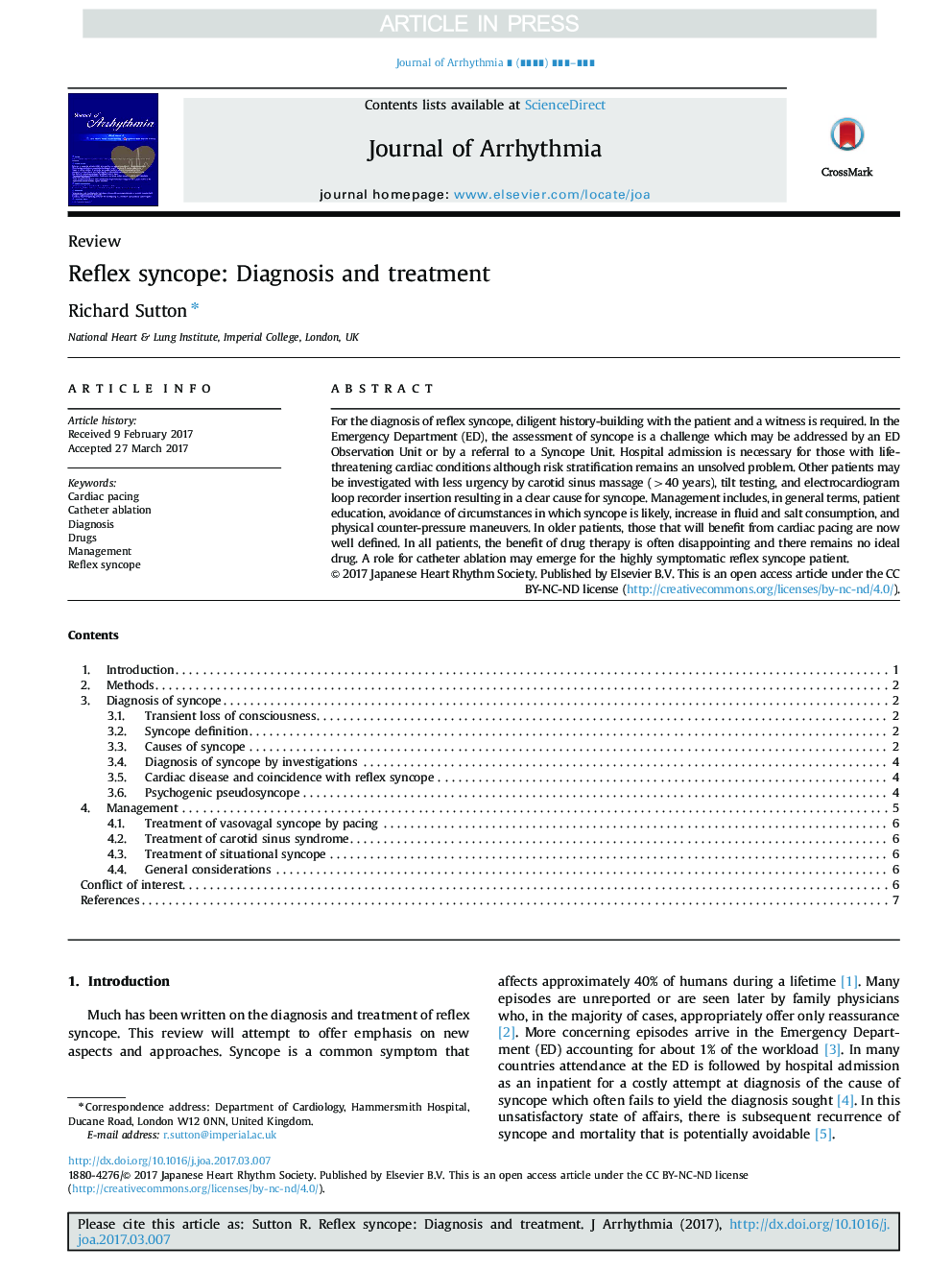| Article ID | Journal | Published Year | Pages | File Type |
|---|---|---|---|---|
| 8667572 | Journal of Arrhythmia | 2017 | 8 Pages |
Abstract
For the diagnosis of reflex syncope, diligent history-building with the patient and a witness is required. In the Emergency Department (ED), the assessment of syncope is a challenge which may be addressed by an ED Observation Unit or by a referral to a Syncope Unit. Hospital admission is necessary for those with life-threatening cardiac conditions although risk stratification remains an unsolved problem. Other patients may be investigated with less urgency by carotid sinus massage (>40 years), tilt testing, and electrocardiogram loop recorder insertion resulting in a clear cause for syncope. Management includes, in general terms, patient education, avoidance of circumstances in which syncope is likely, increase in fluid and salt consumption, and physical counter-pressure maneuvers. In older patients, those that will benefit from cardiac pacing are now well defined. In all patients, the benefit of drug therapy is often disappointing and there remains no ideal drug. A role for catheter ablation may emerge for the highly symptomatic reflex syncope patient.
Related Topics
Health Sciences
Medicine and Dentistry
Cardiology and Cardiovascular Medicine
Authors
Richard Sutton,
